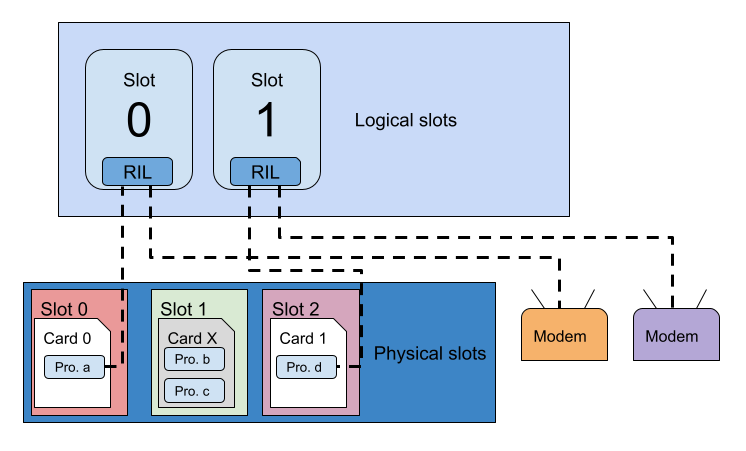Android 13 can support multiple SIM profiles through eSIM
Mishaal Rahman, a senior technical editor of Esper, an Android development and maintenance platform, pointed out that the Android open source project and developer website both refer to the description of Multiple Enabled Profiles (MEP), which may be added in Android 13 to allow a single group of eSIMs to be used.
According to Mishaal Rahman, this design will allow mobile phones to use two sets of telecom numbers at the same time through a single set of eSIM. It means that the mobile phone design will be able to remove the traditional physical SIM card slot, thereby reducing more internal space, and even adding additional battery capacity, or setting up a micro SD memory card installation space.

Left: A device with two logical slots. In physical slot 0, there is a physical SIM card with an active profile. In physical slot 2, there is an eSIM with an active profile. Physical slot 1 is not in use. Source: Google.
Right: A device with three logical slots. In physical slot 0, there is a physical SIM card with an active profile. In physical slot 1, there is an eSIM with two downloaded profiles, both active using MEP. Source: Google.
At present, the mobile phones sold in the market are still mainly used with physical SIM cards. According to the demand, an additional 1-2 sets of physical SIM card slots will be added, or a set of eSIM designs will be added to allow users to use multi-SIM. It will also take up some of the internal space of the phone. According to Google’s design, it is expected that all mobile phones will be able to use multiple SIM profiles through eSIM, allowing users to switch between different telecom number service plans more easily.
According to the description, Google’s design patent for multiple SIM profiles on a single eSIM was approved in 2020. It is not necessarily only applied to Android 13, but may also be applied to connected devices with other operating systems, such as Windows or iOS devices. However, at present, Google has not further explained this design.






